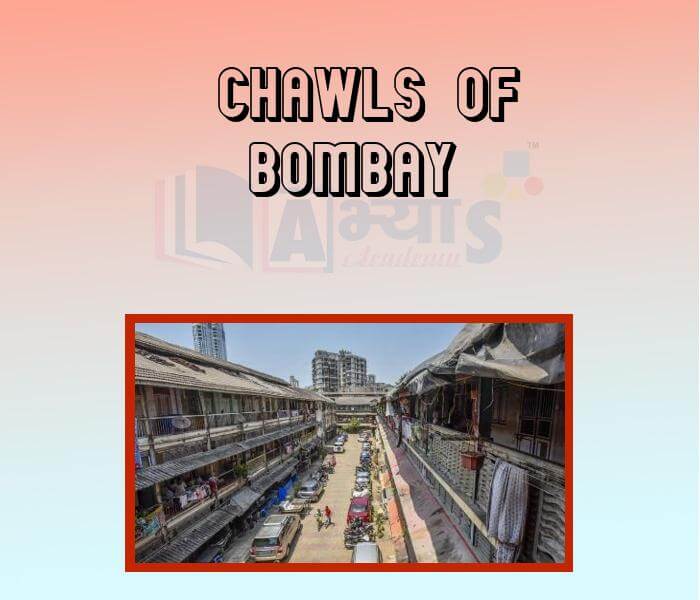Chawls of Bombay










Chawls of Bombay
Chawls of Bombay: The rich Parsi, Muslim, upper caste traders, industrialists of Bombay lived in spacious bungalows. But more than 70 per cent of the working people lived in the thickly populated chawls of Bombay. Chawls were multi-storeyed structures, which had been build since the 1860s in the native parts of the town. Each chawl was divided into smaller one-room tenements, which had no private toilets. These houses were largely owned by private landlords like merchants, bankers and building contractors. The homes were small, so streets and neighbourhoods were used for a variety of activities like cooking, washing and sleeping and also for social functions. Liquor shops and akharas came up in any empty spot. Chawls were also the place for the exchange of news about strikes, riots, jobs or political demonstrations.
Mill Neighbourhood and Housing difficulty of Poor: Caste and family groups in the mill neighbourhood were headed by someone, who was similar to a village headman. Sometimes, the jobber in the mills became the local neighbourhood leader. People belonging to the depressed classes found it very difficult to find houses. Sometimes, they had to live in shelters made of corrugated sheets, leaves or bamboo poles. Planning in London emerged from the fears of social revolution and planning in Bombay came out as a result of fears about plague epidemic.
Establishment of Bombay Improvement Trust: To overcome the problem of housing, Bombay Improvement Trust was established in 1898. It focused on clearing poorer homes out of the city centre. By 1918, only 14000 were rehoused out of 64000 displaced persons. In 1918, Rent Act was passed to keep rents reasonable. But, it could not solve the severe housing crisis as landlords withdrew houses from the market.
Students / Parents Reviews [10]
My experience with Abhyas is very good. I have learnt many things here like vedic maths and reasoning also. Teachers here first take our doubts and then there are assignments to verify our weak points.

Shivam Rana
7thIt has a great methodology. Students here can get analysis to their test quickly.We can learn easily through PPTs and the testing methods are good. We know that where we have to practice

Barkha Arora
10thAbhyas Methodology is very good. It is based on according to student and each child manages accordingly to its properly. Methodology has improved the abilities of students to shine them in future.

Manish Kumar
10thAbhyas is a complete education Institute. Here extreme care is taken by teacher with the help of regular exam. Extra classes also conducted by the institute, if the student is weak.

Om Umang
10thBeing a parent, I saw my daughter improvement in her studies by seeing a good result in all day to day compititive exam TMO, NSO, IEO etc and as well as studies. I have got a fruitful result from my daughter.

Prisha Gupta
8thI have spent a wonderful time in Abhyas academy. It has made my reasoning more apt, English more stronger and Maths an interesting subject for me. It has given me a habbit of self studying

Yatharthi Sharma
10thIt was a good experience with Abhyas Academy. I even faced problems in starting but slowly and steadily overcomed. Especially reasoning classes helped me a lot.

Cheshta
10thOne of the best institutes to develope a child interest in studies.Provides SST and English knowledge also unlike other institutes. Teachers are co operative and friendly online tests andPPT develope practical knowledge also.

Aman Kumar Shrivastava
10thMy experience with Abhyas academy is very good. I did not think that my every subject coming here will be so strong. The main thing is that the online tests had made me learn here more things.

Hiya Gupta
8thAbout Abhyas metholodology the teachers are very nice and hardworking toward students.The Centre Head Mrs Anu Sethi is also a brilliant teacher.Abhyas has taught me how to overcome problems and has always taken my doubts and suppoeted me.
